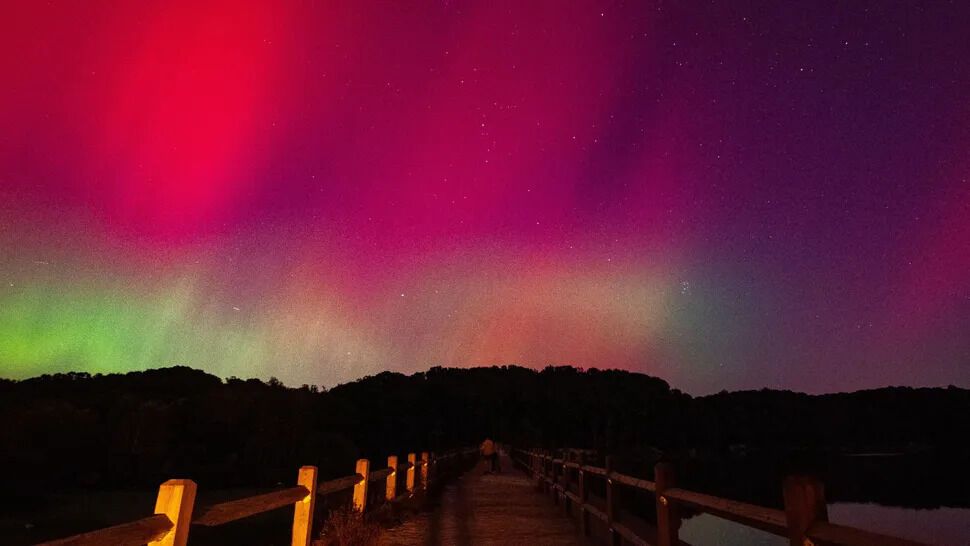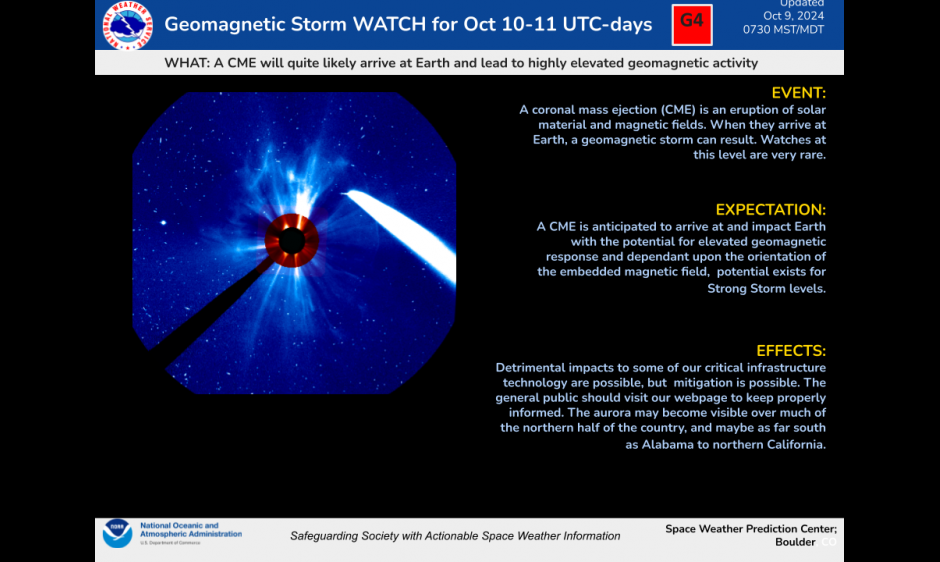Strong Solar Storm Continues to Cause Auroras Around the World

A striking display of the aurora borealis, commonly seen in Arctic regions, thrilled skywatchers across the world due to a powerful geomagnetic storm forecasted by the National Oceanic and Atmospheric Administration (NOAA). On Thursday night, aurora enthusiasts captured stunning sights as charged particles from a solar burst, originating from sunspot AR 3848, collided with Earth’s magnetosphere. This Event triggered vibrant displays of the northern lights. This is prepared by SSP.

Witnesses captured the auroras over Indiana’s Griffey Lake and near New York City over structures like the Tappan Zee Bridge on Oct. 10-11. The NOAA’s Space Weather Prediction Center issued a G4 geomagnetic storm warning—the penultimate level indicating storm intensity. A G4 storm results from a coronal mass ejection (CME) slamming into Earth’s atmospheric shield—this is about as rare as they come. The predicted northern lights were visible far beyond their usual realm due to this intense wave of high-speed solar particles.

Despite potential disruptions to GPS, satellites, and power grids, this geomagnetic storm was exciting news for aurora hunters anticipating the rare beautiful vistas of celestial red and green hues revealed over typically uncommon locales across the United States.
Earlier, SSP wrote what to expect in 2025 during the solar maximum.



















